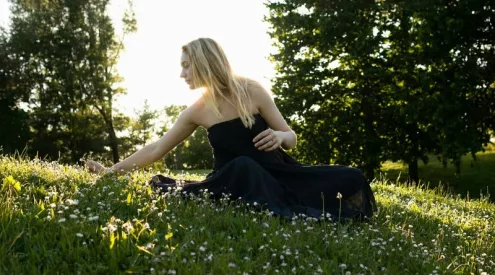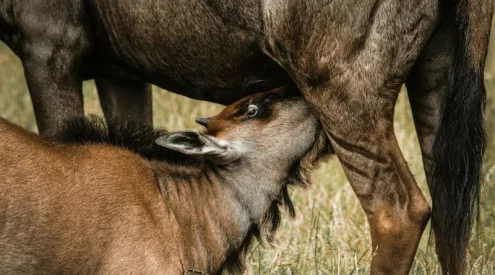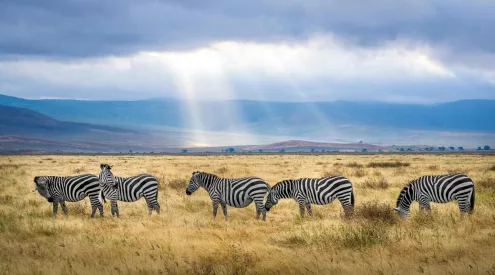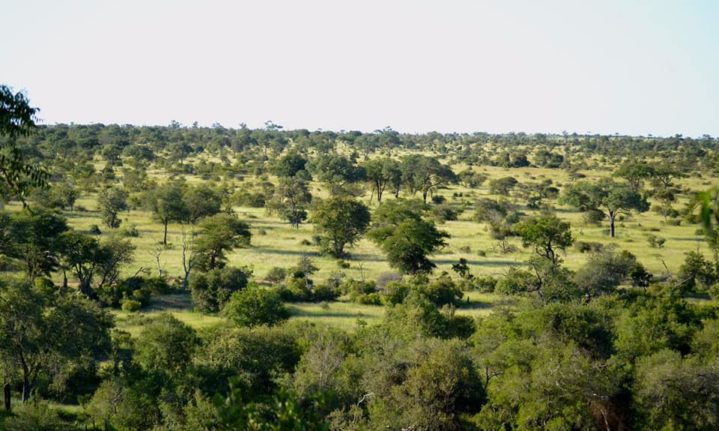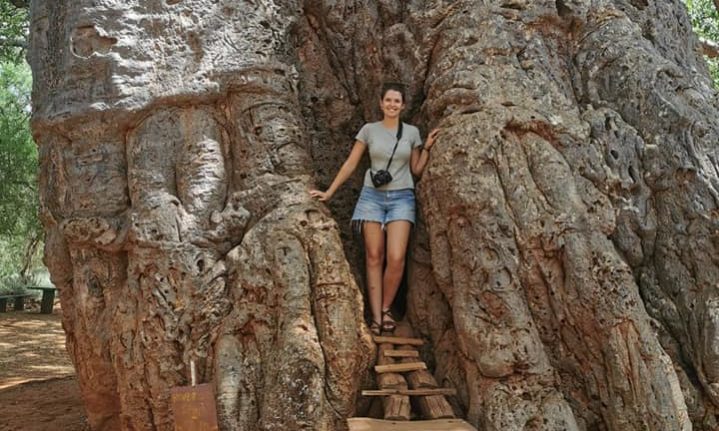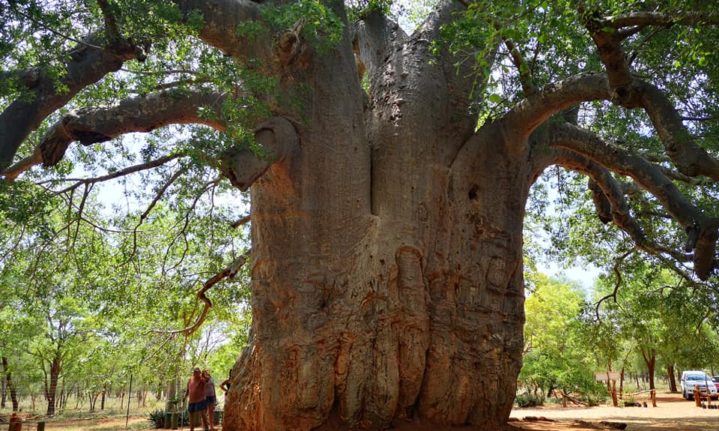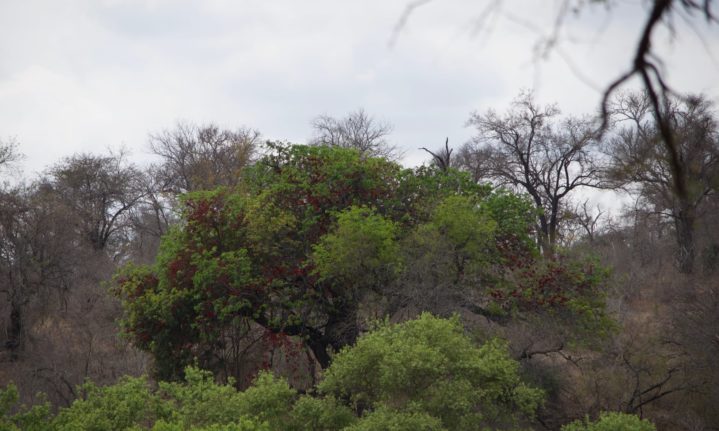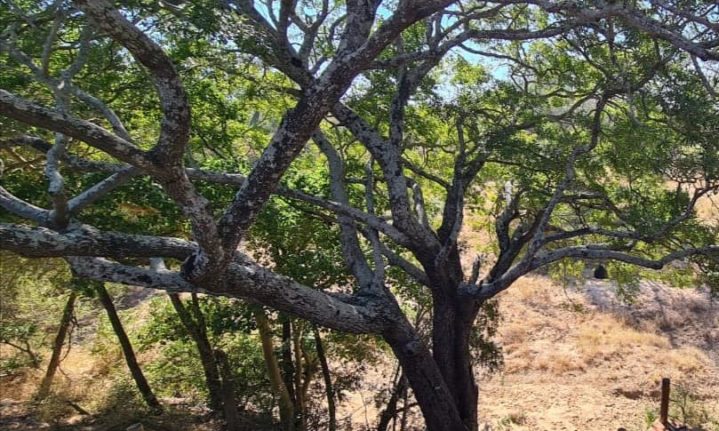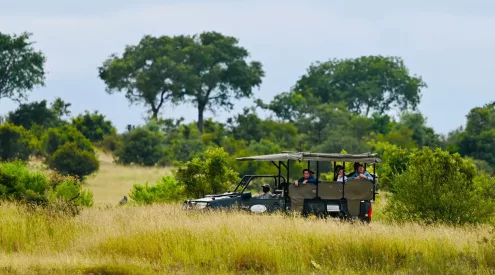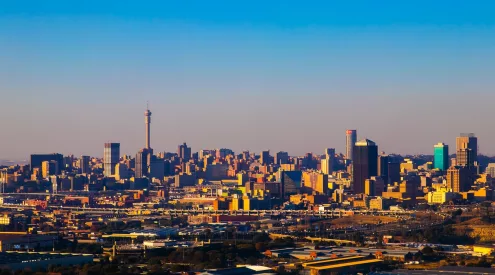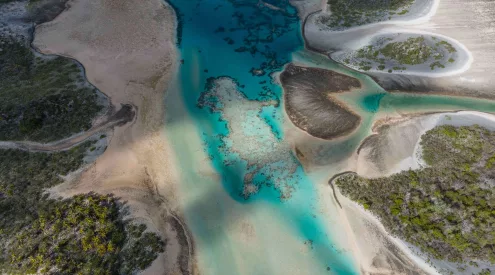If you rely only on seeing the “Big Five” animals, a drive in Kruger can be disappointing. When spotting game, it’s always a right place, right time scenario and of course, these cannot always be guaranteed.
But if you turn your attention to the trees, you’ll never return from a game drive unsatisfied. Trees never move, they photograph beautifully, they often house incredible sightings (sleeping leopards and the like) and it can be incredibly rewarding to identify a new tree. While there is no official “Big Five” of trees, these are some of Kruger’s biggest and best species, and a good place to start if you are new to identifying trees.
1. The Baobab/ Kremetart (Adansonia Digitata)
An easy one to identify, the mighty Baobab is first on the list as the undisputed biggest tree in Kruger. This is probably the Kruger’s most distinctive tree, due to its gargantuan size. The larger baobabs in Kruger are thousands of years old! They are found mostly in the northern regions of the park, especially prevalent in the Punda Maria and Shingwedzi regions, but there are some specimens further south. (The southernmost baobab is found about 25km south of Satara on the Satara-Tshokwane road at Kumana Dam).

Identifying features:
-Stout, fleshy trunk (mostly grey, sometimes pinkish in the sun)
-Wide spreading crown
-White flowers (spring)
-Large pendulous pods, with a hard wooden shell and hairy appearance
-Deciduous tree (leaves in summer, bare in winter)
These bulbous, shiny “upside-down” trees (so-called because their branches look a lot like roots) can grow over 20m tall and live for thousands of years. Their white flowers are pollinated by fruit bats, and the fruit is found within hard pods that hang from the tree.
There are smaller baobabs in some of Kruger’s rest camps, but in their infancy (which in the case of a baobab is less than 200 years old) they can sometimes go unnoticed.
Monkeys, baboons and warthogs eat the fruit and seed pods, bush babies and bats feed on the nectar and elephants sometimes eat the spongy baobab bark.
2. Weeping Boerbean/ Huilboerboon (Schotia Brachypetala)
These magnificent trees often line riverbeds or drainage lines in Kruger, and grow well in or around termite mounds. While they can be found throughout the park, they are more abundant south of the Sabie river. In spring, they erupt with crimson red flowers, and can be spotted from miles away. The tree gets its name from the copious amount of nectar that overflows or “weeps” from the flowers. While not every tree will grow to be large, they can reach up to 22m in height.
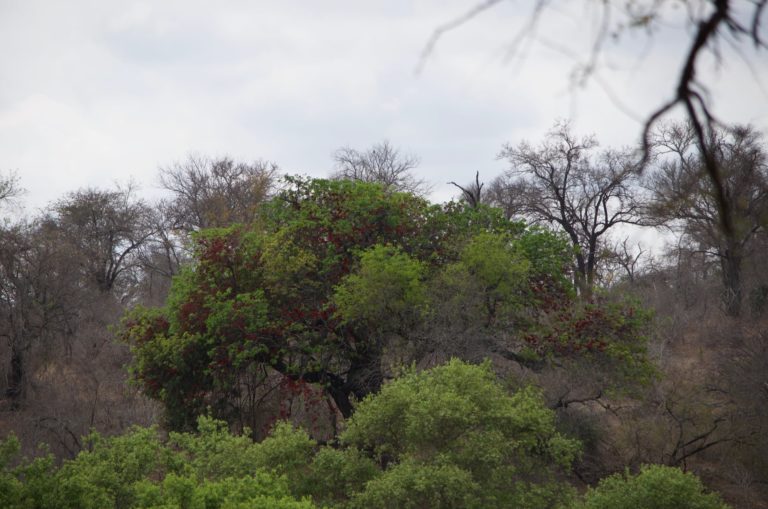

Identifying features:
-Single stem
-Large spreading, densely branched and rounded crown
-Glossy dark green leaves (young leaves are copper coloured)
-Bright red multi-petaled flowers (Usually in spring)
-Rough brown bark
-Evergreen (in warm areas like Kruger)
These trees, particularly when flowering are a hive of activity, attracting all sorts of birds and animals. Nectar-feeding birds, like sunbirds feed on the nectar, and insect-eating birds feed on the bees and other bugs that the nectar attracts. Monkeys and baboons feast on the flowers, and the leaves are eaten by various browsers, including black rhinos.
3. Jackal berry/ Jackalsbessie (Diospyros Mespiliformis)
One of the savanna giants, Jackal berries can live up to 200 years, growing up to 20m tall. This tree is found throughout Kruger in all soil types, but is especially prevalent in low-lying areas along riverbeds and streams. In these environments, it grows especially big.
Jackal berries, like Marulas, are dioecious, which means male and female reproductive organs present separately. In the case of Jackal berries, the flowers on the male tree grow in clusters, while the flowers on the female tree grow individually on hairy stalks, and only the female trees bear fruit.

Identifying features:
-Dense green canopy, semi-deciduous
-Tall, upright trunk with spreading branches
-Grey or dark brown bark, with a roughish texture
-Smallish dark green leaves with a dull shine
-New leaves (in spring) are red
-Cream-coloured, bell-shaped flowers
-Small fleshy oval fruit, mostly yellow in colour (It can turn a darker colour when ripe, but is mostly eaten before that stage)
The Jackal berry supposedly gets its name because the fruit is often found in jackal dung, but if that is the only criteria then it could just as easily have been called a monkey or baboon-berry, or after any of the many animals that feed on this tree. (Including kudu, klipspringers, warthogs and dassies.)
4. Natal Mahogany/ Rooiessenhout (Trichilia emetica)
Often found along riverbeds, but also occasionally in bushveld, Natal mahoganies have a distinct, very dense crown. This tree casts excellent shade for animals in the heat of summer, (entire prides of lion have been seen sleeping in their shade,) and is evergreen so it never loses its leaves. A water-loving species, Natal mahoganies are found along nearly all rivers in Kruger, with the exception of the Shingwedzi and its tributaries. To get a nice up close look at one of these beauties, there is a Natal Mahogany in every rest camp (with the exception of Shingwedzi).
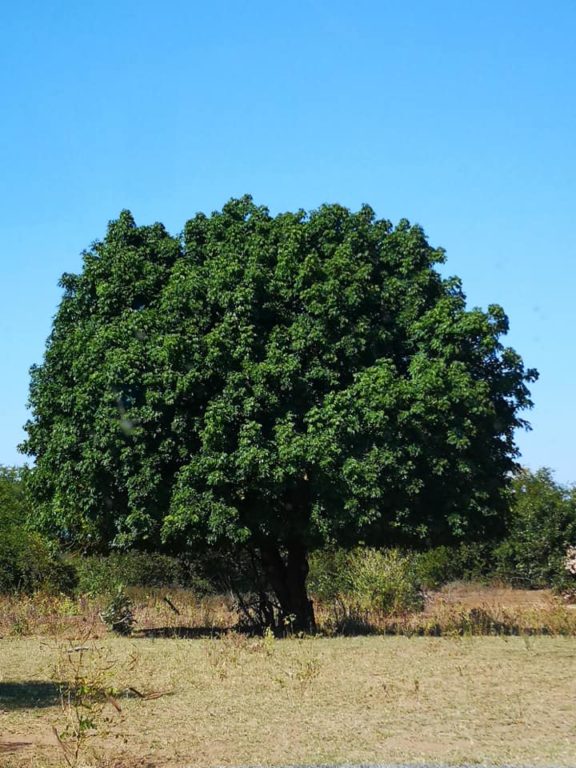
Identifying features:
-Dark green glossy leaves (evergreen)
-Dense, spreading crown
-Smooth, dark brown bark
-Sweet smelling, light green flowers (August to November)
-Pear-shaped fruits, which split open when mature, revealing a bright red and black seeds
Birds are attracted to the dense shade of the Natal Mahogany. Starlings, barbets, grey and purple crested louries and hornbills eat the seeds while baboons, monkeys and nyala eat the fruit.
5. Sycamore fig/ Sycomorusvy (Ficus sycomorus)
Sycamore Figs, also known as the African queen of trees, are found in the sandy soils along all the riverbeds and drainage lines in Kruger, and grow especially well near the perennial rivers like the Timbavati. A good place to see some of these is magnificent big trees is along the Timbavati river between Orpen and Satara. Sycamore figs can grow upwards of 20m, even reaching as tall as 35m.
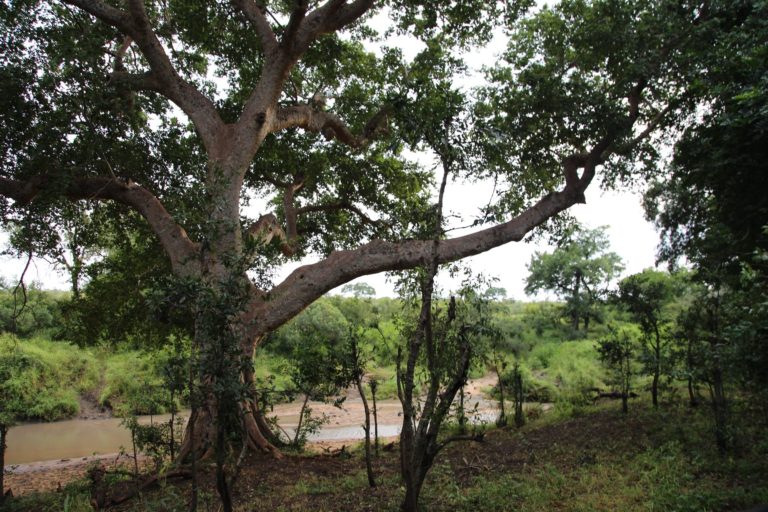
Identifying features:
-Mostly green, seldom leafless
-Dense and wide spreading crown
-Milky latex in all parts of the tree
-Large figs clustered along the branches; greenish-yellow then pale red when ripe
-Pale green, thin leaves rounded at the tip and rough to the touch
-Yellow-grey stem, with very pale papery bark that flakes off
The wood of a Sycamore fig is very light, in colour and in weight. The trees fruit throughout the year but peak between July and December. The figs attract all manner of birds and animals, from bats to elephants to monkeys to bushbabies. At Babalala picnic spot in Northern Kruger, a beautiful fig grows through the thatched shade of the picnic site, a great place to get close to the tree and learn to identify it.
Did you know?
This giant tree is dependant on a tiny little wasp, without whom this Queen of trees would not prosper. The Fig Wasp, attracted to the scent of minuscule flowers within the fruit, enter the fig through a tiny gap. Full of pollen, as well as wasp eggs, these wasps pollinate the flowers, lay their eggs then die. Some of the flowers will become seeds, and others will form a kind of wasp nursery, protected by the tree.
Honourable mention must also go the Nyala Berry, Tamboti and Leadwood, who are also giants of Kruger and can be found throughout the park.


